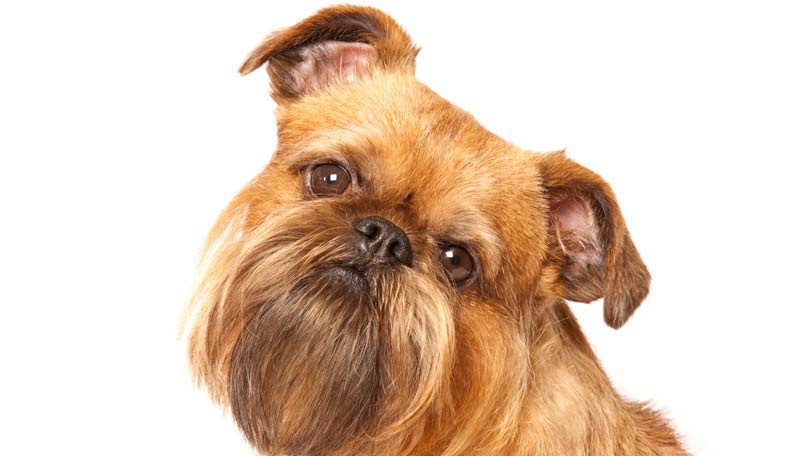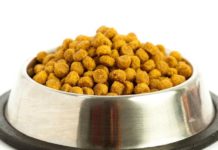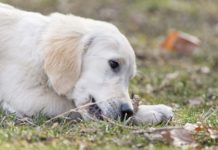
Brushing a dog’s teeth is vital to his health. Neglect of the teeth can lead to disease, tooth loss, dead teeth, and mouth pain. Between the recommended annual cleanings, dog owners should train their dogs to endure a good brushing.
Not all toothpastes are the same. Just because toothpaste can work for humans doesn’t mean that it is appropriate for dogs. Humans are trained to spit out their toothpaste. A dog who can be trained to spit out their toothpaste will have a spot on national television. It is safer to purchase toothpaste designed for dogs and be sure not to use more than the minimum amount to prevent over-ingestion of the paste. Mouthwash made for dogs is also available, which is recommended as a supplemental tooth care routine at least once a week.
To use mouthwash in between brushings, simply saturate a cotton ball with the appropriate mouth wash and wipe the dog’s teeth thoroughly. Some dogs believe this is a treat while others believe you are out to torture them. If you can train your dog as a puppy things will go much smoother. It is easier to train your pup to sit for a mouth cleaning than an older second hand dog.
If you’ve adopted an older dog, use caution the first time you attempt to clean his teeth this way. Stand behind him and off to one side in an effort to prevent any attempts to bite or bulk. Always reward teeth cleaning time with a nice little treat afterwards. If possible, treat your dog with something other than a food reward. If nothing other than food gets through to him, make it a small food reward since you did just clean his teeth. However, part of the process is training him to tolerate the cleaning so it may be a little bit of give and take for awhile.
The younger you start brushing a dog’s teeth, the easier it will be on both you and your pal as he gets older. Most vets recommend either a weekly or biweekly brushing. Some vets feel that this is a little excessive, and thus they recommend a monthly brushing exercise. When training your puppy, it’s okay to brush every three or four days, using toothpaste only occasionally. Sometimes, you have to repeat the behavior often and follow through with a reward in order to train him to tolerate the process.
Using a pea sized amount puppy approved toothpaste, you are going to want to train your dog to tolerate short incremental brushstrokes throughout the entire process. Give him a moment in between these increments to swallow, and adjust. Dogs don’t always close off the back of their throat the way humans do, so there may be a little coughing and sputtering. This just means that you should make your incremental brushes smaller. Get all the teeth to the very best of your ability.
It is much easier to brush your own teeth, so take your time and don’t get frustrated. Try to make it a good experience for him. Give him some soft, soothing remarks about his good behavior, even if you have to act quickly to catch him being good about it. Dogs don’t like the feeling of a toothbrush in their mouth. Of course, they would chew it to pieces if given the opportunity but won’t tolerate the feel of the brush in the hands of their humans. Go figure.
Special dog toothbrushes work better than discarded human brushes. Many dog brushes are designed to slip over your finger and the only action required of you is to feel around his teeth to the best of your ability. These brushes are easier than the bristled type and do almost the same quality job. However, if you can’t manipulate the bristled type, then it’s completely ineffective. That would make the type you slip over your finger much more effective.
You can begin the process by brushing just a few teeth and then gradually increase the time and amount of teeth brushed every few days. This can prevent the scenario of fighting with your dog in a test of wills, which is likely to make him completely intolerant of the process and make you resent the idea of doing it. If he makes it too much of a fight from the beginning, you will not be likely to continue for long. If you take your time and make it fun for your pup, he may actually begin to enjoy the process, or at least enjoy the lavish praise and rewards afterwards, not to mention your beaming approval of his behavior.
Brushing a dog’s teeth doesn’t need to be a nightmare for either one of you. It takes a bit of patience and it takes a bit of time to help him adjust. But the patience and time pay off by helping to avoid dead teeth, lost teeth, and gum diseases that he can develop from never having his mouth cared for. Anyone who has ever had a serious tooth ache knows exactly how bad mouth pain can be. Dental care for dogs is much better than the mouth pain.





